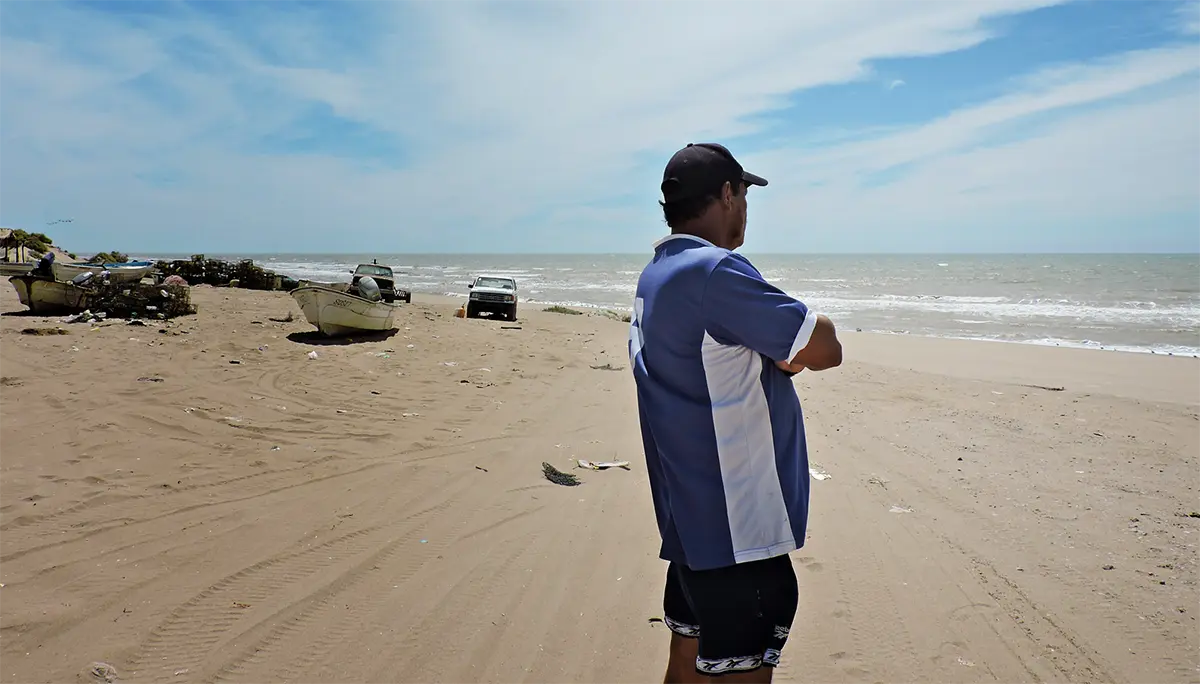Coastal Communities Resilient to Extreme Hydrometeorological Events in the Upper Gulf of California
Organization: Medio Ambiente y Comunidad CEDO, A.C.
Mission: To develop prosperous communities and resilient ecosystems in the northern Gulf of California and other ecoregions through the integration of people, knowledge, and solutions.
Location: States of Baja California and Sonora
Communities benefiting directly from the project: Gulf of Santa Clara, municipality of San Luis Río Colorado, and Puerto Peñasco, municipality of Puerto Peñasco, both in the state of Sonora; San Felipe, municipality of San Felipe, Baja California.
Country: Mexico
Other Organizations Involved: For formation of the “Community Climate Change Risk Management and Emergency Planning Committees”: Alto Golfo de California y Delta del Río Colorado Biosphere Reserve; Municipality of Puerto Peñasco; Municipal Council of San Felipe; Municipality of San Luis Río Colorado; Community and fishing leaders of the Upper Gulf of California; Tourism sector leaders of the Upper Gulf of California. In relation to the educational program: Ministries of Education and Culture of the states of Baja California and Sonora. For the communication campaign: Local media. For certification of competencies: National Standards and Labour Certification Council (Consejo Nacional de Normalización y Certificación de Competencias Laborales) (federal Conocer program).
 @ Archivo CEDO
@ Archivo CEDO
Background
The effects of climate change are apparent every day around the globe. While extreme weather events have not historically caused significant impacts in the Upper Gulf of California región, this pattern has changed in recent years.
Rising sea levels, coupled with the extreme tides characteristic of this región and increasingly frequent and intense storms (for example, Kay in 2021), has had synergistic effects leading to flooding, coastal erosion, and severe impacts on coastal community infrastructure in San Felipe, Baja California and in the Gulf of Santa Clara and Puerto Peñasco, Sonora.
In addition, it has been documented that changing ocean temperatures are altering the food chains of marine and coastal organisms, including protected, migratory, and commercial species, and in this case fishing and aquaculture, the economic and cultural backbone of these three communities.
To help face the new challenges of climate change in the region, this project aims: to increase the climate resiliency of coastal communities in the Upper Gulf of California and to promote well-being, environmental equity, and community empowerment.
Goals
- By March 2025, a group of “Community Climate Change Risk Management and Emergency Planning Committees” will have been formed in the three coastal communities of the Upper Gulf of California. These will identify and address the specific vulnerabilities of each community to extreme weather events.
- By December 2025, the communities of the Upper Gulf of California will be informed of the risks of climate change and will have adopted or undertaken adaptation and mitigation measures.
- By March 2026, municipal authorities and community leaders in the Upper Gulf of California will be certified in the development and implementation of special civil protection plans.
Main activities
- Forming “Community Climate Change Risk Management and Emergency Planning Committees” to facilitate equitable and inclusive spaces for participation among sectors and actors.
- Drafting action protocols in the context of a climate change adaptation and mitigation plan.
- Creating a capacity building program for public servants, community leaders, and others interested in the “development of risk-based special civil protection plans” (competency standard EC0908) through the federal Conocer program, with reference to the environmental justice-related challenges being experienced in the region.
- Developing an education and communication campaign comprising environmental education activities for children and youth in the area of disaster mitigation, as well as the creation of materials to inform the public of what to do in the case of an emergency.
Expected outcomes
- The communities of the Upper Gulf of California are organized and prepared to address risks and emergencies resulting from climate change.
- The three communities will have identified their climate change-related risks and vulnerabilities and will have developed adaptation and mitigation strategies.
- Each community will have a plan allowing it to be better prepared to face events and impacts associated with climate change.
- The Risk Management and Emergency Planning Committees will identify the critical activities and basic equipment necessary to respond to extreme weather events and will have devised a plan to acquire that equipment.
- Print and digital publicity materials will be available on the risks of climate change and the adoption of best practices for adaptation and mitigation of its effects.
- The three communities will be familiar with the climate adaptation and mitigation plan, will be following its emergency protocols, and will have adopted more sustainable ways of life; in addition, they will play an active role in planning and carrying out adaptation and mitigation measures in the spirit of the Escazú Agreement.
- Children and youth from these communities will have basic knowledge of climate change and will be motivated to adopt practices leading to more sustainable ways of life.
- CEDO will have acquired capacities for the development of special civil protection plans, while the CEDO Sea School will be accredited for training and assessment around competency standard EC0908.
- Local authorities and community leaders will have the capacity to develop and implement special civil protection plans.
- The capacities of local authorities and community leaders, as regards the development of special civil protection plans, will have been validated by means of official certification.